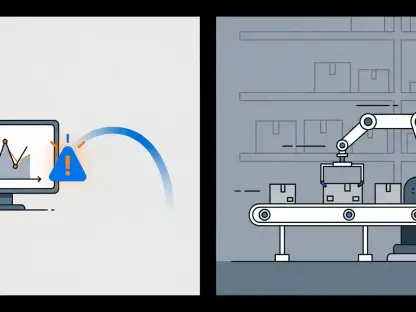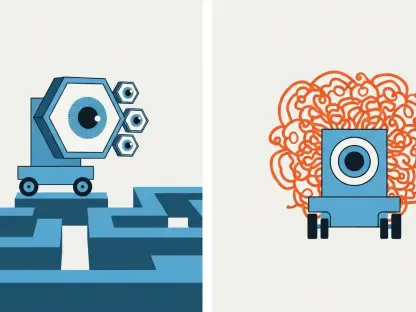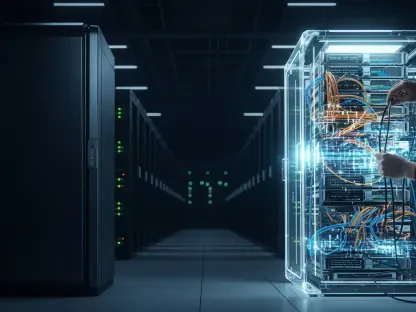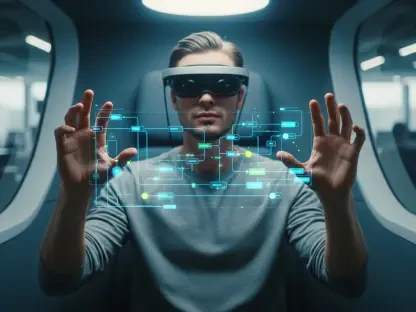What if a single sentence could transform a fleeting idea into a solid, buildable structure? Imagine a child typing “rocket ship” on a screen and instantly receiving step-by-step instructions to construct it with Lego bricks—or a designer prototyping a chair in hours instead of weeks. This is the reality brought to life by BrickGPT, an AI-powered tool developed at Carnegie Mellon University. By merging cutting-edge technology with the simplicity of Lego, BrickGPT is not just changing how toys are built; it’s paving the way for a seismic shift in manufacturing and design.
Building the Future with Every Brick
The significance of BrickGPT lies in its ability to bridge the gap between imagination and reality with unprecedented ease. At its core, this tool allows users to input text prompts—think “castle” or “guitar”—and receive detailed guides to create stable Lego structures. This isn’t merely about play; it represents a fundamental rethinking of how ideas can be turned into tangible objects, slashing the barriers of time and technical know-how that often stifle creativity.
Beyond individual creators, the implications for industries are profound. Manufacturing sectors, often bogged down by lengthy design phases, stand to gain from a system that accelerates prototyping. BrickGPT’s potential to streamline workflows positions it as a critical innovation in a world where speed and adaptability are paramount, making it a game-changer for both hobbyists and professionals.
Why This AI Tool Is a Big Deal
In today’s fast-paced landscape, the design-to-production process remains a bottleneck, riddled with inefficiencies and steep learning curves. BrickGPT directly addresses these challenges by integrating generative AI with physical construction, cutting down the time from concept to creation. Data from early testing at Carnegie Mellon suggests that design iterations using this tool can be completed up to 60% faster than traditional methods, a statistic that underscores its transformative impact.
Accessibility is another cornerstone of its relevance. By enabling anyone with a basic understanding of language to craft complex structures, the technology democratizes innovation. From students exploring engineering concepts to companies testing product ideas, BrickGPT levels the playing field, ensuring that expertise is no longer a prerequisite for creation.
This tool also taps into a broader trend of personalized manufacturing. As consumer demand for custom products grows, solutions like BrickGPT offer a scalable way to meet these needs without the overhead of conventional design processes, signaling a shift toward more inclusive and responsive production models.
Inside the Mechanics of BrickGPT
Diving into the specifics, BrickGPT stands out with a suite of features tailored for precision and usability. Its text-to-model functionality allows users to type a simple description and receive a brick-by-brick blueprint for a stable Lego build. This seamless translation from digital input to physical output is grounded in sophisticated algorithms that prioritize real-world applicability over mere aesthetics.
A standout aspect is its focus on structural integrity. Through a stability scoring system, the AI evaluates each design, employing a rollback mechanism to correct potential flaws before they manifest. Trained on the StableText2Brick dataset, which includes over 47,000 structures from the ShapeNetCore library, BrickGPT predicts brick placements with remarkable accuracy, ensuring cohesive and durable results.
Currently supporting 21 model types, the tool is on a trajectory for growth. Plans to expand its scope include diversifying designs and tackling more intricate objects, with updates anticipated over the next two years from 2025 to 2027. Such developments hint at applications far beyond Lego, potentially influencing fields like furniture design and toy production.
Hearing from the Minds Behind the Tech
The vision for BrickGPT comes from a talented team at Carnegie Mellon’s School of Computer Science and Robotics Institute. Jun-Yan Zhu, Michael B. Donohue Assistant Professor, sees it as a stepping stone to a future where “anyone can design everyday items like tables using AI with minimal effort.” His perspective highlights the tool’s role as a catalyst for widespread creativity.
Associate Professor Changliu Liu focuses on its industrial promise, noting, “Reducing the timeline from design to prototype can cut costs by significant margins and drive faster innovation.” This insight reveals the dual nature of BrickGPT as both a playful medium and a serious asset for businesses looking to stay competitive.
Doctoral students like Ava Pun and Kangle Deng bring additional depth to the project, blending academic rigor with practical application. Their combined expertise ensures that BrickGPT is not just a theoretical experiment but a robust solution with real-world potential, rooted in interdisciplinary collaboration.
How to Make the Most of This Innovation
For creators and industries eager to harness BrickGPT, practical steps can maximize its benefits. Start by experimenting with straightforward prompts like “chair” or “bridge” to understand the detailed instructions provided. This initial exploration helps build confidence in aligning manual or robotic construction with the AI’s output.
Pay close attention to stability feedback during the building process. The tool’s alerts for potential weaknesses allow for real-time adjustments, ensuring the final structure holds up under physical stress. This feature is particularly valuable for iterative testing, where durability is non-negotiable.
Industries should consider broader applications by collaborating with developers to adapt the AI for materials beyond Lego. Meanwhile, staying informed about updates from Carnegie Mellon will unlock access to enhanced features as the tool evolves to support more complex projects, offering a clear path for scaling up creative and professional endeavors.
Reflecting on a Groundbreaking Journey
Looking back, BrickGPT emerged as a beacon of innovation, seamlessly blending AI with the tactile world of Lego bricks. Its ability to transform simple text into stable, buildable designs marked a turning point in how creativity and manufacturing intersected. The tool’s emphasis on efficiency and accessibility redefined what was possible for both amateurs and experts alike.
As a next step, stakeholders are encouraged to explore partnerships with academic institutions and tech developers to push the boundaries of generative manufacturing. Experimenting with diverse materials and applications should become a priority, ensuring that the legacy of BrickGPT continues to inspire. The journey has sparked a vital conversation about integrating AI into everyday creation, urging industries to adapt and innovate in response to this evolving landscape.









